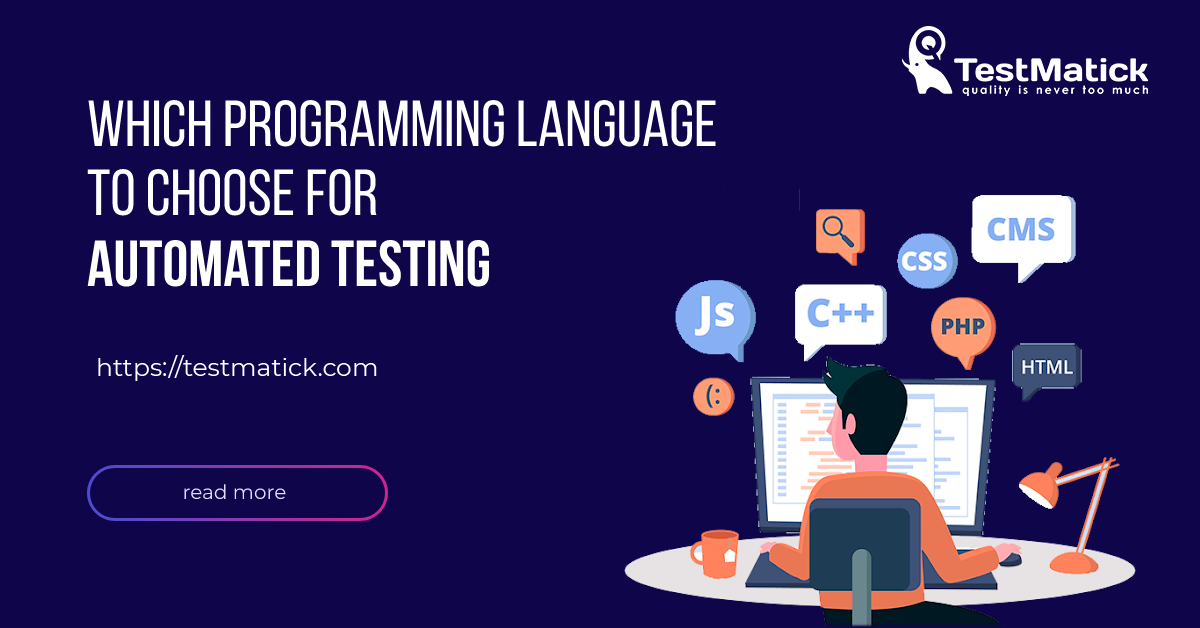Any automated testing implies the use of a certain set of tools for the automated execution of test cases created earlier.
Since this type of testing is performed only with mechanized systems, a user needs minimum time for manual testing and much more time to technically support automated scripts.
Automation is better for large projects that need a lot of tests. The main task of any automation is bug scanning in the simplest actions.
Undoubtedly, we cannot talk imagine test automation without a programming language. Further, we’ll have a look at how to choose the most appropriate one.
The Most Popular Programming Languages for Software Test Automation
While choosing a proper programming language, one needs to consider 8 basic conditions. These criteria assess the language not only from the standpoint of purity and comfort of use but also from the standpoint of solving current problems on each project separately.
- Usability – speed of memory management is extremely important, which means that a programming language should perform such operations easily.
- Elegance – the process of converting a test case in the program code should be as simple and clear as possible;
- Available Packages. It is better to use ready-made packages for common operations such as web drivers (Selenium), HTTP requests, and SSH.
- Available test frameworks – the availability of interaction with frameworks should be at a good level.
- Powerful Command Line – high-quality CLI facilitates the process of launching checks.
- Easy Build Integration – build automation should instantly report errors.
- IDE Support.
- Industry Adoption – language support should be constantly evolving.
Next, we’ll talk about the 3 most popular programming languages for automation processes.
Java
It is a general-purpose programming language that is built on the principles of object-oriented programming. This programming language follows the WORA standard – a special principle that provides many advantages for performing cross-platform testing.
The Java language serves to maintain massive enterprise systems. About 3 billion devices around the world run software built on this language. QA engineers perform automated testing using JUnit with Selenium Web Driver.
Naturally, this language has both positive and negative aspects. On the positive side, we can note the presence of PageFactory that simplifies the program code for automated tests. Java has an impressive community, which means that it is not difficult to find answers to any questions. From the negative side, we can only note the fact that this program code is a little more difficult to read than in Python.
Python
This programming language also serves for software test automation aims. It provides completely open-source code and can be used in machine learning. This language is as high-level as possible, has a dynamic system, and is advisable to use by all beginners in the field of test automation.
Benefits:
- It is a language of general purpose.
- The presence of a large system library allows you to perform both complex and simple tasks. PyUnit and Pytest is the most requested automation software in Python.
- This programming language is rightfully considered the most laconic, which means it makes it possible to achieve the set goal with the minimum number of lines.
- It contains an impressive community and open-source code.
JavaScript
According to research by Stack Overflow Developer, JS went to number one in the “Most Popular Virtual Technology” category. JS is the most high-quality modern programming language for software testing tasks, which front-end developers mostly use.
One might wonder what is special about this language. The answer is simple – it uses the shift-left testing methodology when programmers are directly involved in test code development. This methodology allows you to build close cooperation between the testing and development departments. Therefore, it allows creating high-quality automated testing of current projects.
Additionally, it is worth mentioning a lot of useful frameworks that the JS language supports, and which help to create practical unit tests for any purpose:
- Jest;
- Mocha;
- Jasmine;
- Nightwatch.js.
As a conclusion, we’d like to note the fact that automated testing is the cheapest and most convenient method for checking software in comparison with manual checks. Regarding the choice of the programming language, we can say that the study of any modern and popular language will be a universal basis for the technical growth and professional development of both QA engineers and developers.










Leave A Comment